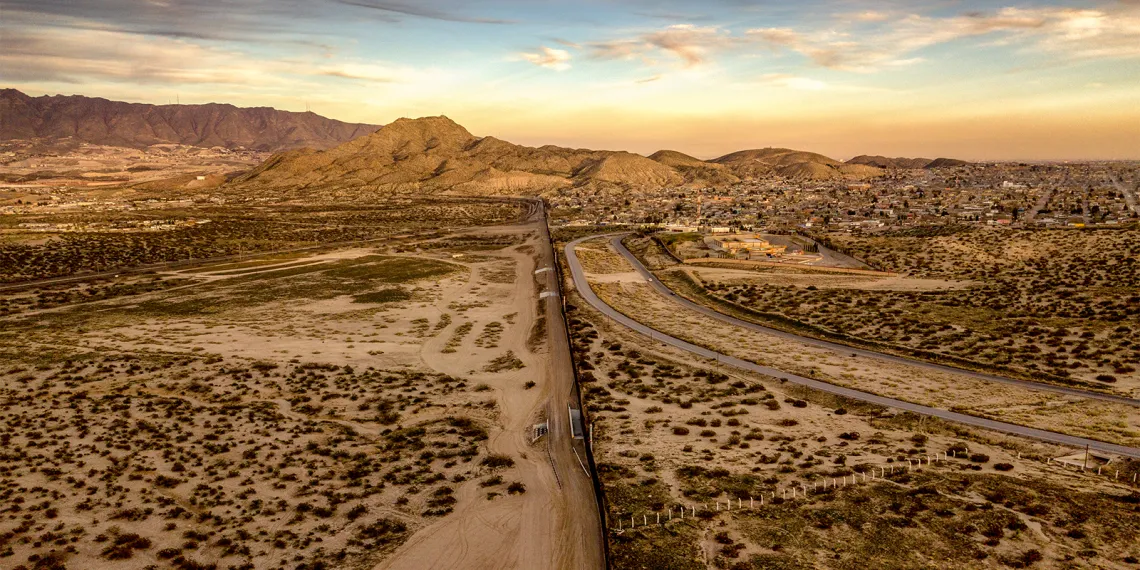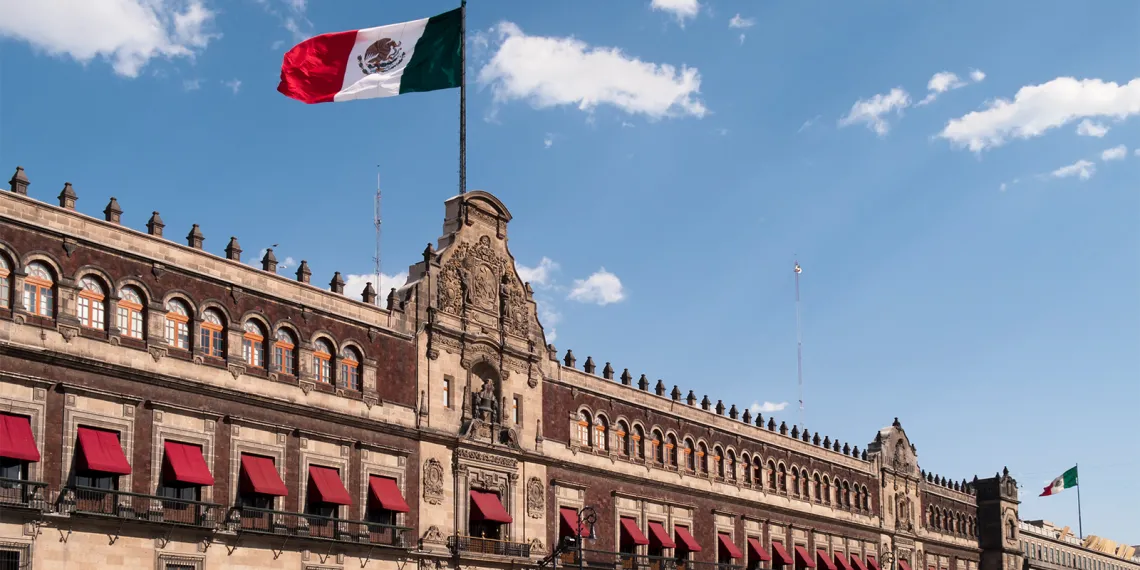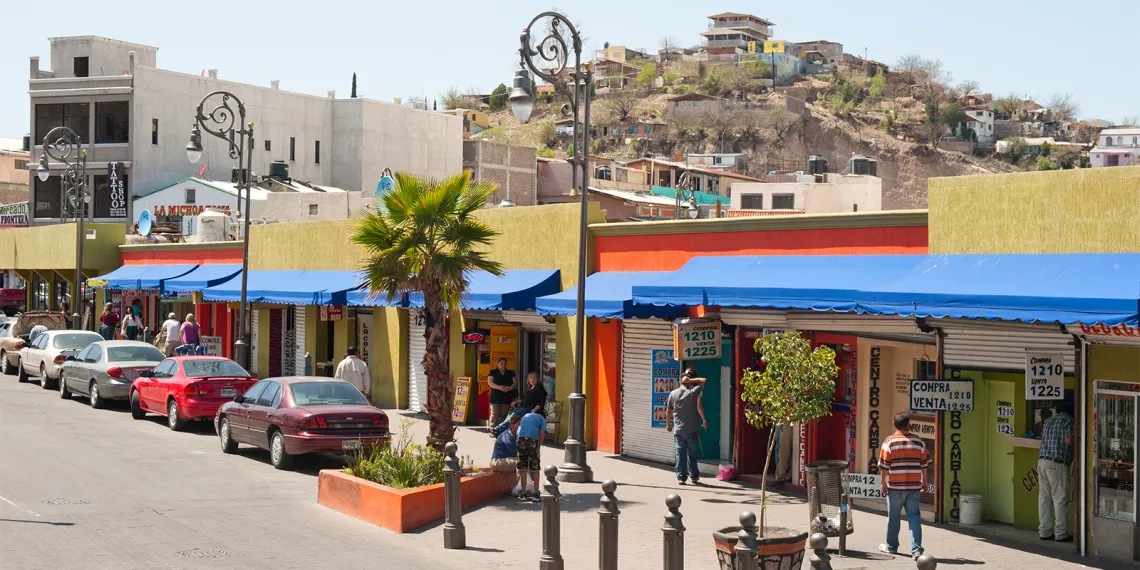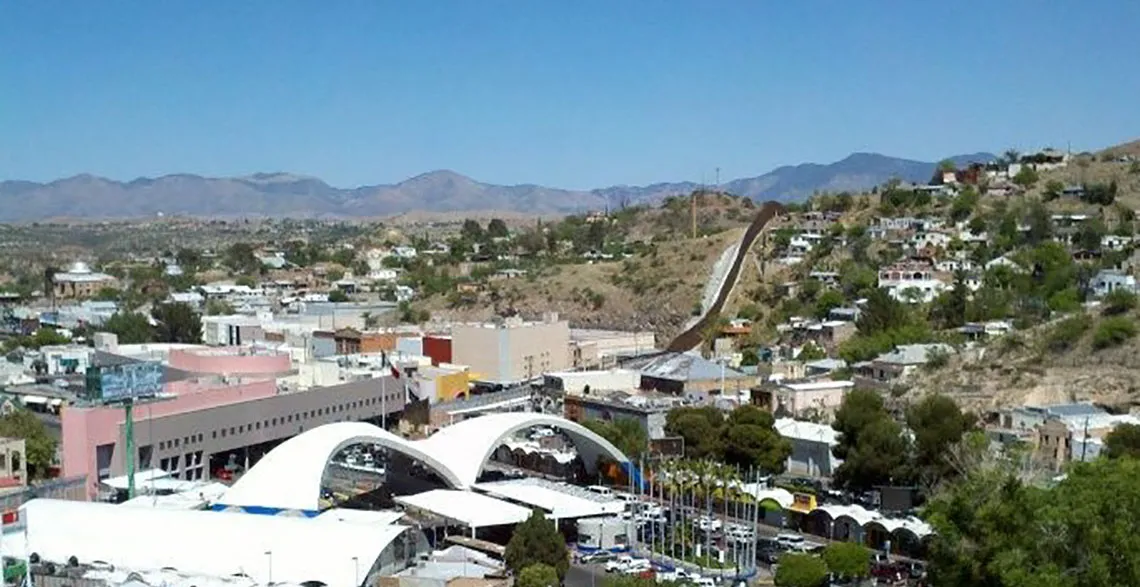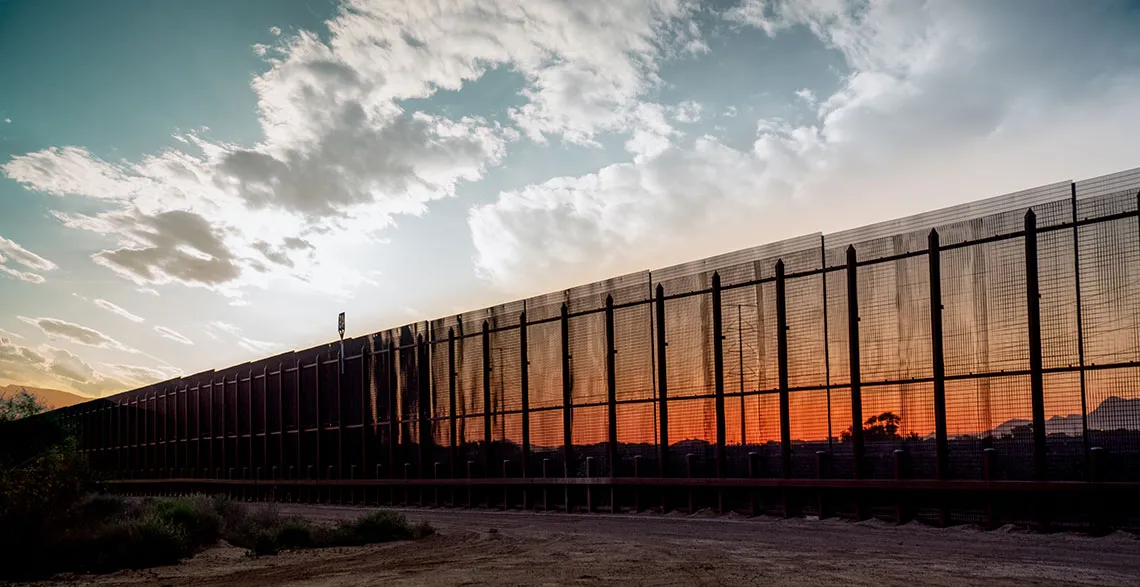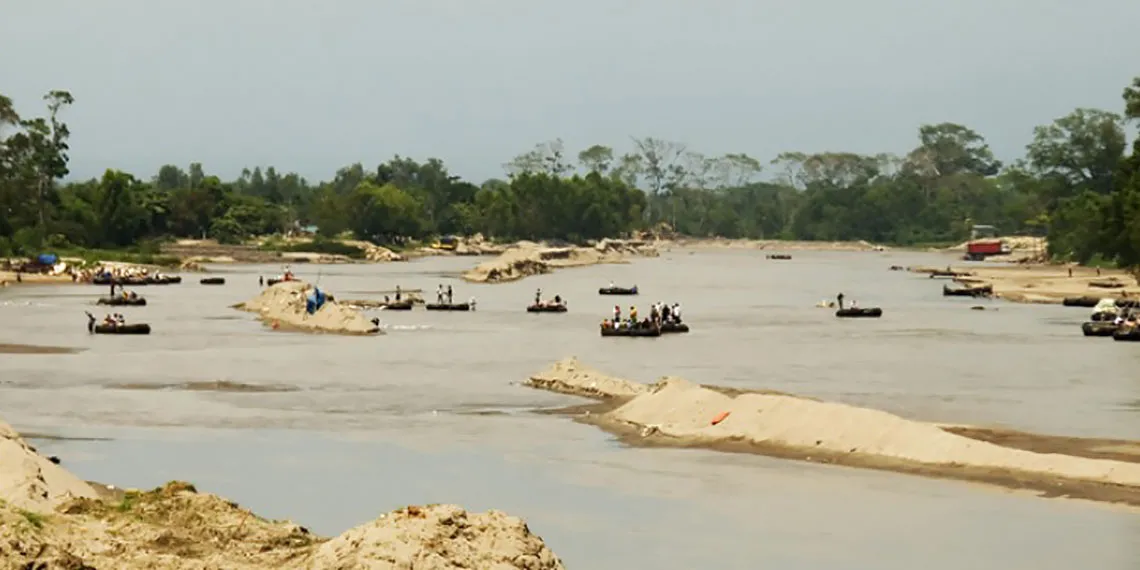It has been a humanitarian challenge for years, but now, the rapidly shifting policies of the Trump administration have once again put the border front and center. Discover how past presidents approached the issue in this decade-by-decade timeline.
The Mexico–United States border — 2,000 miles of terrain ranging from desert to urban sprawl — is the most traversed border in the world, with over 350 million documented crossings every year.
A highly controversial concern due to the Trump administration's policies on immigration, as well as deeper, polarizing issues within the U.S., many academics trace the current stalemate to President Lyndon B. Johnson's pivotal Immigration and Nationality Act of 1965, which ended a long-standing quota system that heavily favored Western Europeans. The law created a new path to citizenship that focused on reuniting immigrant families and bringing skilled workers to the U.S., which, over time, gradually but dramatically transformed the demographic make-up of the country, generating a decades-long ideological struggle between open borders and stricter immigration laws.
Here is a timeline of the past 50 years and the history behind the issues of today.
1970s: The Nixon, Ford & Carter Administrations
In September 1969, the Nixon administration launched "Operation Intercept," an anti-drug measure that resulted in the near closing of the border between Mexico and the United States. The operation was unpopular and failed, but it led to the Boundary Treaty of 1970, which created our modern border lines.
Under President Gerald Ford, the U.S. House of Representatives launched the Domestic Council Committee on Illegal Aliens, and introduced a bill providing amnesty for workers currently in the United States along with employer sanctions for hiring illegal immigrants, alleging that they were driving down the wages of American workers.
In 1978, during President Jimmy Carter’s term, Congress created the Select Commission on Immigration and Refugee Policy to further explore solutions and tighten restrictions on illegal immigration. In Mexico, the nationalized oil industry experienced a boom with the discovery of an offshore oil reserve called the Cantarell Field but, by the end of the decade, the country was again in debt, a victim of fiscal mismanagement.
1980s: The Ronald Reagan Administration
Experiencing the worst recession since the Great Depression, high unemployment once again drove Mexican workers north to the United States to seek work. By 1986, Congress passed the Immigration Reform and Control Act, determined to once again stem the flow by cracking down on U.S. employers who were hiring illegal immigrants, while granting amnesty to those already in the country. During this period, illegal immigration plummeted while, in Mexico, President Carlos Salinas de Gortari pushed to privatize nationalized industry and deregulate the economy, foreshadowing the North American Free Trade Agreement (NAFTA).
1990s: The George H.W. Bush and Clinton Administrations
With the launch of the Immigration Act of 1990 under President George H. W. Bush, the number of legal immigrants accepted into the U.S. each year increased from 500,000 to 700,000. Bush also established the U.S. Commission on Immigration Reform, determined to strengthen Border Patrol through advanced training. Illegal immigration soared, creating a greater demand for more security and surveillance at the border.
In February 1994, the Clinton administration unveiled a new immigration plan that prioritized security, deportation and a reorganization of the asylum process, encouraging legal immigrants to seek citizenship. Increased power was given to local law enforcement in border states with the specific aim of blocking immigrants from major smuggling routes, unintentionally causing a rise in migrant deaths along remote areas.
That same year, NAFTA went into effect, eliminating tariffs and turning the United States, Mexico and Canada into the world’s second-largest trading bloc after Europe. Initially, this served to provide the Mexican economy with a boost, but an economic crisis created by political instability, a drop in foreign investor confidence and government misspending undermined the economy and, late in 1994, the peso suffered a collapse, causing internal strife. This period saw the rise of the Zapatista Movement in Chiapas, and the 1996 Illegal Immigration Reform and Immigrant Responsibility Act, or IIRIRA, which scholars cite as one of the largest changes to immigration laws over the last few decades.
Early 2000s: The George W. Bush Administration
After the September 11, 2001 attacks, border security increased as fears of undocumented immigration grew. Two years later, the Department of Homeland Security (DHS) was created, incorporating the INS, Customs and nearly 20 other agencies. That same year, President Bush's proposed guest-worker program met with strong opposition in Congress, which instead endorsed a plan to strengthen the Border Patrol. The Intelligence Reform and Terrorism Prevention Act of 2004, which authorized 10,000 new agents, nearly doubled the patrol by 2010. This led to broader policy developments for the Department of Homeland Security and the Secure Border Initiative (SBI).
By 2005, the Border Patrol launched Operation Streamline as part of a collection of zero-tolerance policies implemented at the Mexico–U.S. border, designed to prosecute and remove undocumented immigrants through an expedited process. This period saw the rise of militia and vigilante groups like the Minuteman Project, a collective of over 1,000 volunteers who searched the desert for undocumented immigrants, as well as groups like No Mas Muerte/No More Deaths, which sought to aid migrants in their perilous journey. In 2006, with the ratification of the Secure Fence Act, the U.S. began construction on 650 miles of fencing.
2008–2016: The Obama Administration
According to the U.S. Border Patrol, from 2007–2011, arrests and detentions of illegal migrants from Central America at the U.S.-Mexico border were reduced from 70,000 to 55,000. Factors such as a weakened U.S. economy in the wake of the 2008 financial crisis increased cartel violence in Northern Mexico, and the Border Patrol’s ongoing “prevention through deterrence” policy made border crossings riskier and much less promising. In 2012 alone, agents made more than 364,000 arrests, instituting border-control strategies including Operation Safeguard in Tucson, Ariz, and the Arizona Border Control Initiative (ABCI) along the state border. The number of apprehensions increased dramatically from 95,000 in 2012 to 220,000 in 2014, with President Obama taking executive action on immigration reform that year, granting temporary work permits and deportation exemptions to millions of undocumented immigrants. This was a continuation of 2012's Deferred Action for Childhood Arrivals program — or DACA — an ambitious initiative, still in existence today, that defers deportation proceedings for those under 15 who were brought to the U.S. as children.
Today: The Trump Administration
In 2016, Republican nominee Donald Trump ran for president on an “America First” platform of tougher immigration restrictions and a plan to build a border wall with Mexico. In January 2017, Trump signed an Executive Order to expedite construction on the wall, but on September 20 of that year, California Attorney General Xavier Becerra filed a lawsuit alleging that the Trump administration had overstepped its powers.
In June 2018, the administration established an additional policy designed to separate parents from their children at the Mexican border. The judge ruled in favor of advocacy groups, placing an injunction on the administration. In an escalation of rhetoric, on March 31, 2019, President Trump threatened to shut down the border with Mexico, effectively cutting off trade between the two countries. Yet, despite all the political posturing, the number of undocumented migrants apprehended at the U.S.-Mexico border has remained near its lowest levels since the early 1970s, although the number has risen steadily since President Trump took office.
While much of the country came to a standstill this year due to the coronavirus epidemic, the Trump administration ramped up construction of its multibillion-dollar southern border wall and announced the closure of the border to all non-essential travel.
In March, Customs and Border Protection (CBP) announced plans to erect more than 150 miles of the 30-foot border wall in Arizona, New Mexico and California—in addition to ongoing construction work at 15 sites across those states and Texas.


